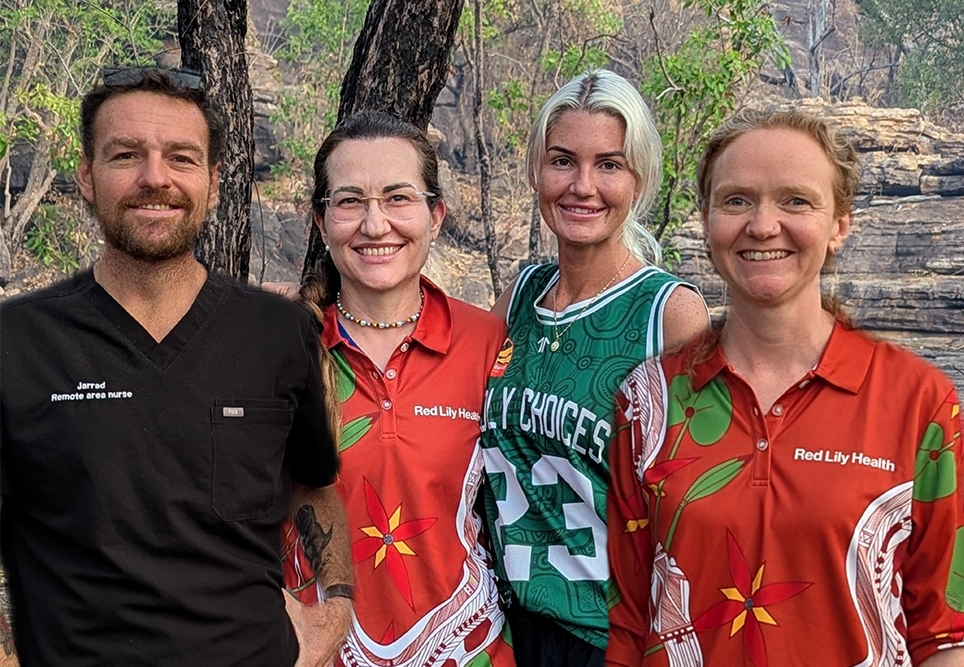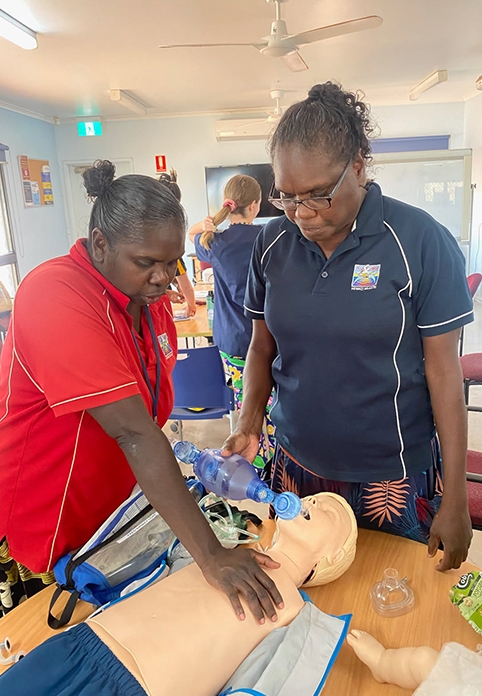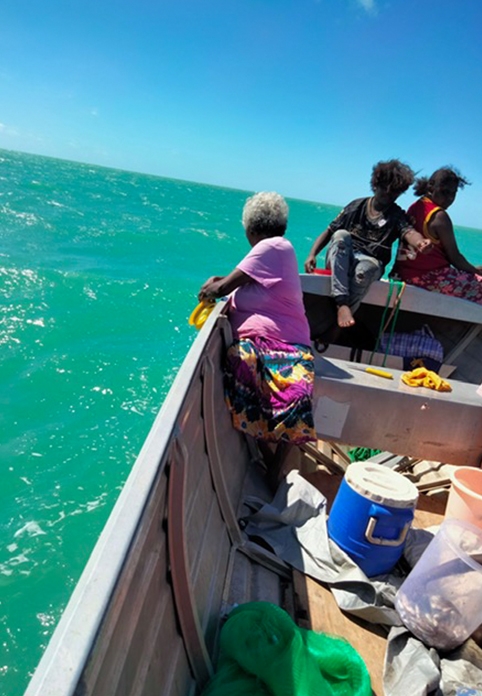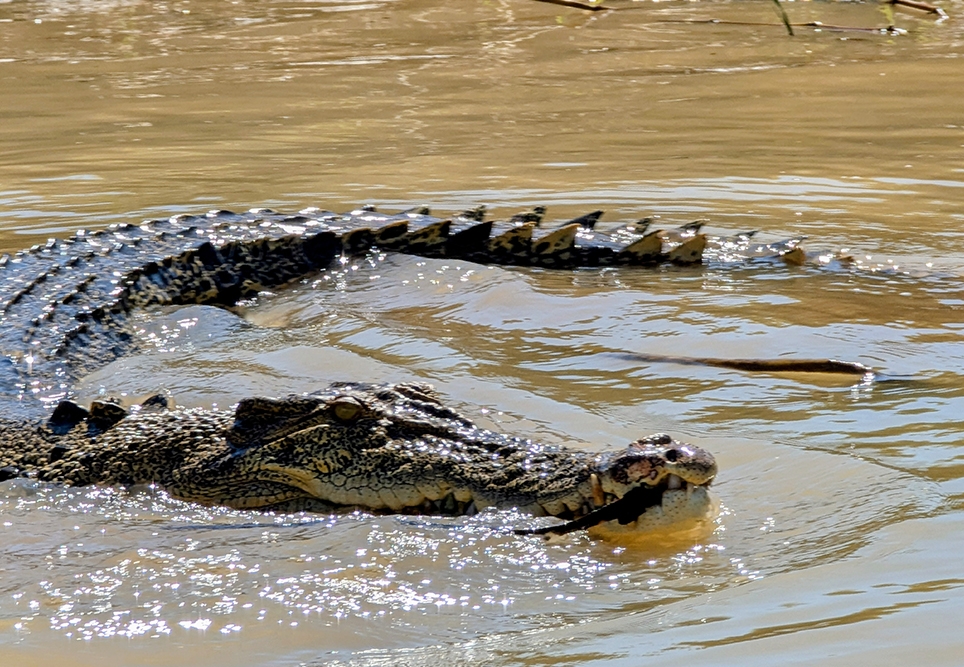This site may not work properly using older versions of Edge and Internet Explorer. You should upgrade your browser to the latest Chrome, Firefox, Edge, Safari, or any other modern browser of your choice. Click here for more information.
Your Stories
This is where we tell your stories, cover topical issues and promote meaningful initiatives.
Reframing the myth of medical superiority with Dr Kirsten Due
The traditional medical hierarchy that positions doctors above nurses has deep historical roots, but does it still serve us well? CRANAplus Member, Dr Kirsten Due, challenges the outdated notion of medical superiority and reflects on what she’s learned from her nursing colleagues in bush medicine. Through personal anecdotes and historical context, she explores how true healthcare excellence emerges not from rank, but from teamwork, humility, and shared purpose.
It was the 1800s when the cultural script of “the doctor’s the boss and the nurse just takes orders” became solidified. Obviously I’m a doctor. But some of my closest friends are nurses. And I have no problems saying that they are easily smarter, kinder and more resilient than me, and have taught me priceless things about medicine and life. What I often ponder is the unspoken sense that there is something unusual about nurses and doctors being close friends. Almost like it breaks a silent convention. I remember a manager once telling her staff, including me, that doctors and nurses shouldn’t be friends and shouldn’t associate after hours. That meant that going for a walk together after work or sharing a meal on the weekend felt sneaky. Not many people would be that extreme, but there’s still a sense of inequality.
Some time ago, a new nurse said to my friend, “How long have you been nursing?” When my friend explained she was a doctor, there was a lot of apologising and a sense of embarrassment. How insulting to have mistaken a doctor for a nurse was the vibe that hung in the air.
A bit of history: before the 1800s, there were ‘nurses’, but mostly in the sense of nuns, lay carers, and domestic helpers. They weren’t formally trained, and their work was considered charitable rather than professional. It’s worth noting that Aboriginal and Torres Strait Islander peoples have practised sophisticated healing traditions for thousands of years. These traditions integrate mind, body, and spirit and continue powerfully today alongside Western medicine. In the 19th century (1800s) medicine aligned itself with universities, licensing laws, and the new ‘scientific method’.
Being a doctor became linked to formal education, exams, and male-dominated institutions. This set up the aura of intellectual superiority. Partly it was because men were considered superior.
Also in the 1800s, nursing transformed into a profession through figures like Florence Nightingale (Crimean War, 1850s), who founded the Nightingale School of Nursing in 1860. Nursing schools spread across Britain, America, and the colonies through the late 19th century. Even then though, leaders like Mary Seacole, Isabel Hampton Robb, and Lucy Osburn in Australia proved nursing was not just ‘obedience’ but leadership, organisation, and reform.
For hundreds of years, doctors have been captains of the boat, and everyone else has had the job of rowing. Sometimes we see that today, but less out in the bush when the boat is more of a rusty tinny with a dodgy outboard motor. Out here, everyone rows. Except when the croc has eaten your oar.
Yet the hangover lingers. You’ll still hear the line, “Oh, but you’re so smart. Why don’t you become a doctor?” like we are still in the Victorian era when doctors were the intellectual elite, the clinical masterminds.
I was interviewing a friend for an article recently, and I said, “How does it feel being a male nurse?” I thought it was fair enough because he was the only one among ten women. He shot back, “Well how does it feel being a female doctor?” Touché and good point!
But he did say that not long ago, there was a complex retrieval and the aeromedical crew walked past the female doctors and asked him for a rundown of events. He was the only bloke, and they assumed, therefore, he was the doctor. This raises other issues about clear identification and communication in emergencies, but he said how life-changing the experience was for him and an insight into the stereotypes that remain. He’s an amazing guy.
If you dig deep enough, you find that even in the beginning, Florence Nightingale was crunching hospital mortality statistics before most doctors had learned to wash their hands.
Mary Seacole, rejected by the establishment, funded her own voyage to Crimea and set up a clinic from scratch.
Lucy Osburn brought Nightingale’s reforms to Sydney and took on the hospital boards. Isabel Hampton Robb, Mary Adelaide Nutting, Kofoworola Pratt – the list of nurse trailblazers runs long, and their influence global. They didn’t just ‘help doctors’, they reshaped health care.
Still, the myth stuck. Doctors were framed as the thinkers, nurses as the doers.
Some of it made sense. Doctors did spend longer in training. They carried the legal liability of prescriptions. In emergencies, hierarchy made decisions quicker. But out in the bush, life in the boat is different. Much of the time, there are no doctors. Much of the time, nurses do the jobs that city GPs wouldn’t have a clue about. And nurse practitioners are a whole other kettle of fish and an extraordinary bunch of practitioners with specialised skills and knowledge that I could only aspire to.
What I love in the remote clinics is that the receptionist (if there is one) might double as the emergency driver. The doctor might be on hands and knees plunging the blocked toilet before racing off to do an ECG. The nurse might be halfway through delivering a breech baby while shouting for someone — anyone — to check the defib batteries.
The Aboriginal and/or Torres Strait Islander Health Practitioner might be translating medical jargon into something meaningful for an elder before setting up IV fluids and giving antibiotics for sepsis. And who empties the bins? Everyone.
The distinction of doing vs thinking is false – although inevitably I am not very good at reading instructions, or backing large vehicles, and more than once have been responsible for taking out the newly fixed rear lights on an ambulance – thankfully the clinic nurse manager just said, “Well at least the vehicle fits in with all the others now.” I have a doctor friend who filled the newly fixed 4×4 ambulance with petrol instead of diesel … we all have our strengths.
But they are not gender or profession-based. We are human, doing difficult jobs in difficult places. And that isn’t (always) chaos – but competence. Competence that doesn’t care about job titles. Whoever has the hands, the skills, and the guts in the moment, does the thing. We all plunge into the mess with everyone else. And that’s the point: bush medicine is not about rank, it’s about roles. Roles that shift, overlap, improvise.
The old phrase “Why don’t you become a doctor?” lands hollow in that reality. When I asked a friend who is a nurse at Gunbalanya (and completed her Master’s in Clinical Leadership) what she thought made for a really good clinic, she laughed and said, “Teamwork makes the dream work!”
I said, “Hey, no, seriously, I mean… What do you really think?”
She said, “I was being serious. It’s all teamwork.” She’s right, survival and joy don’t come from pecking order. It comes from a team.
Florence Nightingale once wrote that nursing required “hard-wrought training, not merely good intentions”. She was right. Modern bush medicine requires more: humour, stamina, humility, and a willingness to mop the floor after resuscitating a patient. It is the kind of gritty egalitarianism that would make both Nightingale and Seacole proud. And to be perfectly honest, the best managers I have ever worked under have been nurses – on the COVID HITH team in Darwin, in Warruwi and in Gunbalanya. Sure, we’ve all had some managers who probably wouldn’t vote as the best slice of barra on the BBQ, but that’s okay. I can happily say I am not at all cut out for management either.
So yes, hierarchy has its place. In a cardiac arrest, one person needs to call the shots. In court, someone has to sign their name on the line. But superiority? That belongs in the museum with the bone saws and laudanum bottles. Not long ago (just to be polite) I asked a medical colleague how he would like to be addressed because I noticed he had ‘AM’ after his name. He inferred that in any public situation, he should be clearly addressed as ‘Professor’. I didn’t mind at all, and he had earned it, but it reminded me of a surgeon in Darwin back in about 2000 who anyone could have mistaken for a cleaner, who was so unobtrusive and humble. After work and on the weekends, he did volunteer work in the prisons. I used to chat to this ‘cleaner’ in the lift in the mornings, and he always had something kind to say. It was only later I discovered he was one of the most senior doctors in the hospital. That’s the sort of person I hope to be.
Out here, in the land of flooded bathrooms and breech births with no antenatal care, there shouldn’t be superiority, only colleagues, pulling together in the same boat. Hoping the croc doesn’t nick off with the oar.
And the next time a doctor says, “You’re so smart, why don’t you become a doctor?” one thought might be: “Why don’t you become a nurse? Then you’d actually know how to run the place.”



